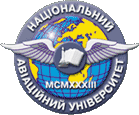Мультілатераційне супроводження літаків з використанням стохастичної фільтрації
DOI:
https://doi.org/10.18372/1990-5548.50.11380Ключові слова:
навігація, спостереження, мультілатерація, супроводження літаків, похибки вимірювань, стохастична фільтраціяАнотація
Розглянуто застосування стохастичних методів фільтрації для супроводу літаків за даними мультілатераційної системи спостереження. Синтезовано рекурентний алгоритм супроводу літака, виконано комп'ютерне моделювання та аналіз результатівПосилання
International Civil Aviation Organization, “Multilateration (MLAT). Concept of use /Asia and Pacific Office,” Edition 1.0, Sep. 2007.
Eric Potier. “Manual on Surveillance Multilateration. Draft edition,” International Civil Aviation Organization, Agenda Item 5.5, WP ASP03-11, Montreal, 2007.
W. H. L. Neven, T. J. Quilter, R. Weedon, and R. A. Hogendoorn, “Wide Area Multilateration.” Report on EATMP TRS 131/04 Version 1.1 – NLR, 2005.
V. S. Chernyak, “Using Potential Accuracy of Object Localization by Multilateration Systems.” Tyrrhenian International Workshop on Digital Communications. Enhanced Surveillance of Aircraft and Vehicles
(ESAV’08), Capri, Italy, 2008, Proc., pp. 100–105.
I. M. Konchenko and F. J. Yanovsky, “Influence of Multilateration Surveillance System Arrangement on the Target Localization.” Proc. of the ational Aviation University. Kyiv, NAU, vol. 4, pp. 29–32.
M. S. Yarlykov, Statistical Theory of Navigation. Moscow, Radio and Communications, 1985, 344 p.
##submission.downloads##
Номер
Розділ
Ліцензія
Authors who publish with this journal agree to the following terms:
Authors retain copyright and grant the journal right of first publication with the work simultaneously licensed under a Creative Commons Attribution License that allows others to share the work with an acknowledgement of the work's authorship and initial publication in this journal.
Authors are able to enter into separate, additional contractual arrangements for the non-exclusive distribution of the journal's published version of the work (e.g., post it to an institutional repository or publish it in a book), with an acknowledgement of its initial publication in this journal.
Authors are permitted and encouraged to post their work online (e.g., in institutional repositories or on their website) prior to and during the submission process, as it can lead to productive exchanges, as well as earlier and greater citation of published work (See The Effect of Open Access).

